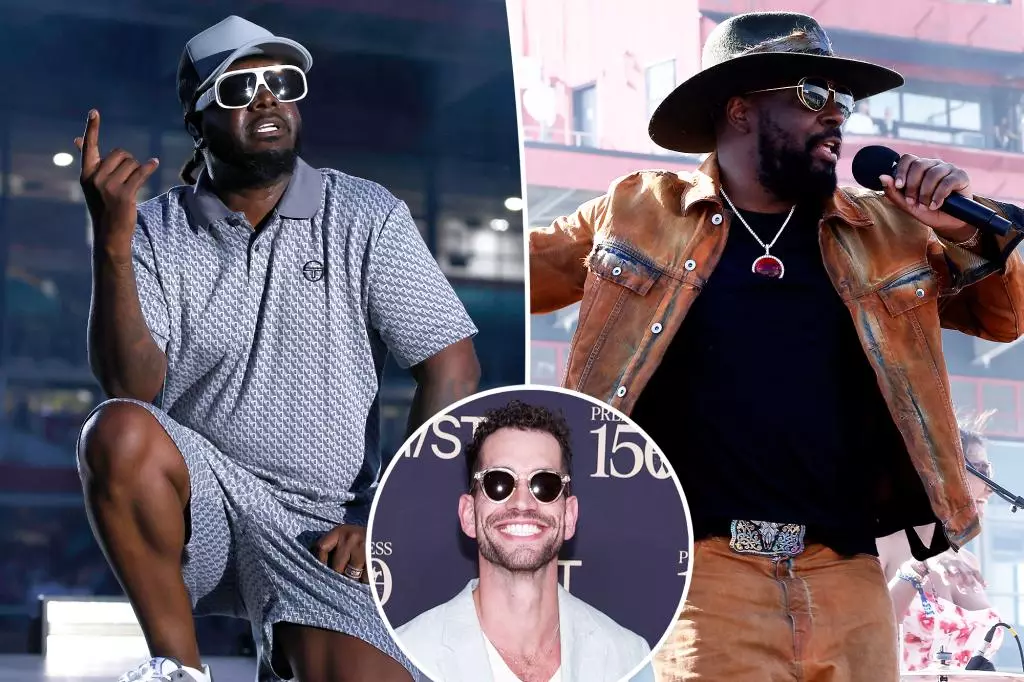The Preakness Stakes, one of the jewels of the Triple Crown series, witnessed its final hurrah at the iconic Pimlico race track this past weekend as it prepares for an extensive multi-year redevelopment. This year’s race was not merely a sporting event; it was a celebrity-studded occasion, transforming the normally competitive atmosphere into a vibrant carnival of music, fashion, and high-profile social gatherings. With performances by Wyclef Jean and T-Pain adding a layer of entertainment that transcended traditional equestrian spectacles, the event captured the essence of modern-day horse racing as more than just a competition—it’s an experience that mingles sport with culture.
Wyclef Jean kicked things off before the main race, serenading a crowd that included influential political figures from Mayor Brandon Scott to Governor Wes Moore. The multi-talented artist’s performance transcended mere music; it became a showcase of unity and celebration. His notable acknowledgment of Belinda Stronach, the CEO of 1/ST, who recently sold the track to the state for a mere dollar, revealed the complexities behind this beloved venue’s future. It’s a decision steeped in both nostalgia and hope, as stakeholders dream of a revitalized Pimlico that honors its rich history while embracing modern amenities.
The Musical Interlude
T-Pain’s subsequent performance captivated the audience with his blockbuster hits. As he mingled with the crowd, humorously questioning whether he should don more formal attire, he encapsulated the playful spirit of the afternoon. The sheer juxtaposition of casual shorts amidst a sea of tailored suits and dresses illustrated how inclusive and light-hearted the event could be, despite the traditional airs commonly associated with horse racing.
The presence of celebrities such as former NFL star Cam Newton and world-renowned chef Bobby Flay emphasized the event’s draw beyond just equestrian enthusiasts. Flay’s passion for horse racing, fostered since his youth at Saratoga, showcased how the sport connects with figures from diverse backgrounds, pointing out the shared excitement that brings people together, regardless of their primary careers. Flay’s willingness to engage with newcomers about betting tips—encouraging them to choose horses based on their names or colors—spoke volumes about the accessibility of the sport. Racing isn’t just for experts; it’s an inclusive sport where enthusiasm and personal connections take precedence.
Star Power Behind the Races
The ambiance was heightened by the presence of reality TV stars and social media influencers. Cast members from popular shows like “Love Is Blind” and “The Bachelor” mingled effortlessly in the VIP sections. This convergence of reality television and horse racing unveils a new demographic of fans who are drawn to the glamour and thrill of social horse racing events, leveraging social media to make the event even more desirable.
However, amidst these festivities, there remains skepticism. During the Black-Eyed Susan Stakes, the presence of “Real Housewives of Potomac” filming piqued the interest of onlookers. Witnesses commented on the scripted nature of the interactions, diverting from the spontaneity that events like these can often evoke. The concern that these shows sanitize real experiences raises questions about authenticity in an environment meant for communal celebration.
Looking Toward the Future
As the day concluded, a lavish after-party at the Elk Room offered a reflective moment amid the glamour. Belinda Stronach, responsible for the track’s future, showcased her vibrant spirit on the dance floor, embodying the duality of business acumen and the love for the sport that the event represented. The transformation of Pimlico into a state-owned site promises a wave of sustainable growth and reinterpretations of community engagement in horse racing culture, echoing the dual sentiment of nostalgia and progress.
This finale at Pimlico was more than just a last race; it was a celebration of lives, hopes, and dreams intertwined with the culture of racing—a potent reminder of why these events continue to captivate audiences far beyond the finish line. For all it’s mixed receptions and grand spectacles, it remains clear that the world of horse racing is evolving, blending the glitz of celebrity culture with the age-old traditions that define the sport.

